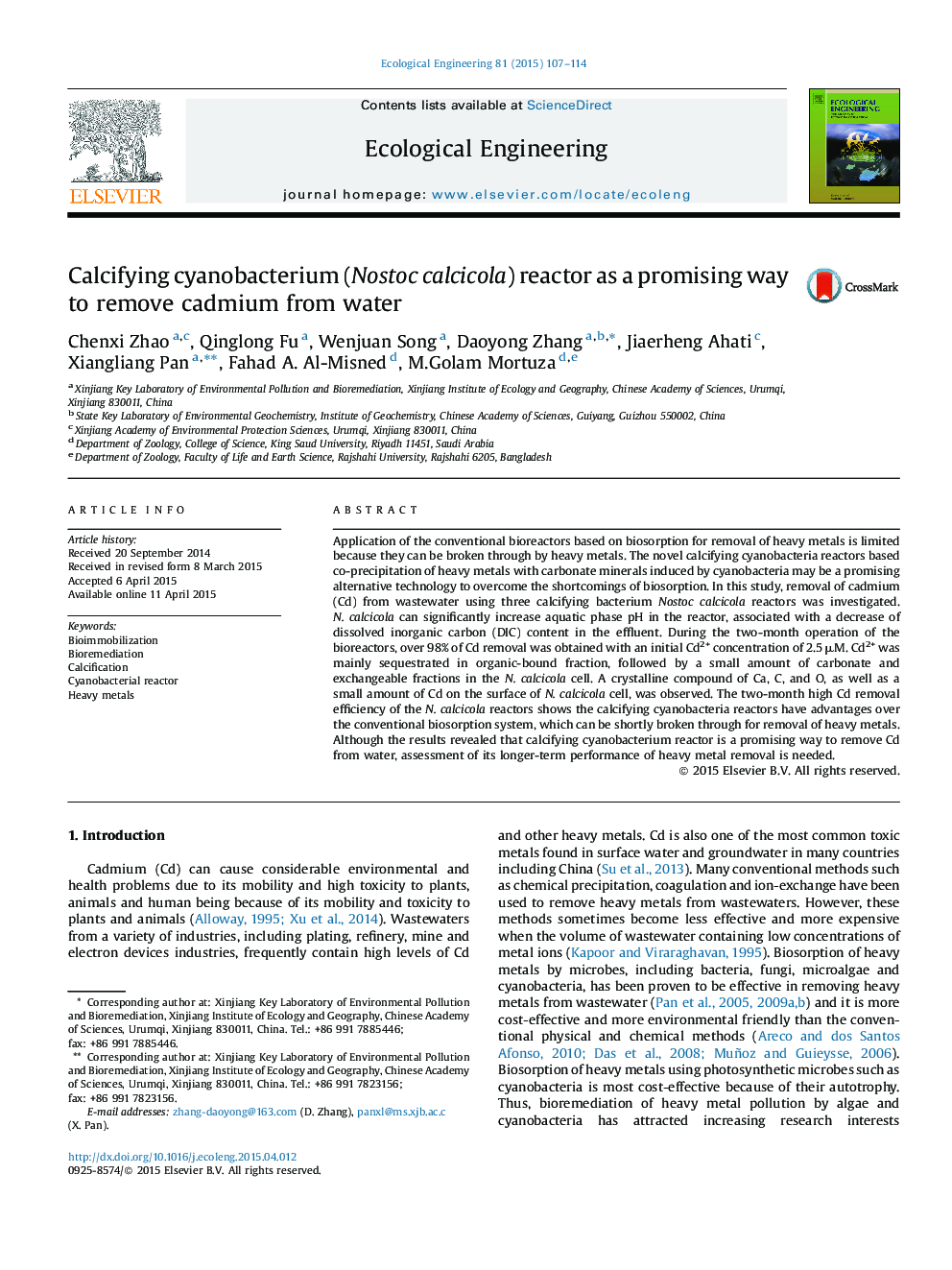| Article ID | Journal | Published Year | Pages | File Type |
|---|---|---|---|---|
| 4389063 | Ecological Engineering | 2015 | 8 Pages |
•A novel type of cyanobacterial reactor was successfully established for removal of Cd from water.•98% of Cd was efficiently removed during two-month operation.•Cd was dominated in organic-bound fraction, followed by carbonate and exchangeable fractions.•Calcifying cyanobacterium reactor is a promising way to remove Cd from water.
Application of the conventional bioreactors based on biosorption for removal of heavy metals is limited because they can be broken through by heavy metals. The novel calcifying cyanobacteria reactors based co-precipitation of heavy metals with carbonate minerals induced by cyanobacteria may be a promising alternative technology to overcome the shortcomings of biosorption. In this study, removal of cadmium (Cd) from wastewater using three calcifying bacterium Nostoc calcicola reactors was investigated. N. calcicola can significantly increase aquatic phase pH in the reactor, associated with a decrease of dissolved inorganic carbon (DIC) content in the effluent. During the two-month operation of the bioreactors, over 98% of Cd removal was obtained with an initial Cd2+ concentration of 2.5 μM. Cd2+ was mainly sequestrated in organic-bound fraction, followed by a small amount of carbonate and exchangeable fractions in the N. calcicola cell. A crystalline compound of Ca, C, and O, as well as a small amount of Cd on the surface of N. calcicola cell, was observed. The two-month high Cd removal efficiency of the N. calcicola reactors shows the calcifying cyanobacteria reactors have advantages over the conventional biosorption system, which can be shortly broken through for removal of heavy metals. Although the results revealed that calcifying cyanobacterium reactor is a promising way to remove Cd from water, assessment of its longer-term performance of heavy metal removal is needed.
